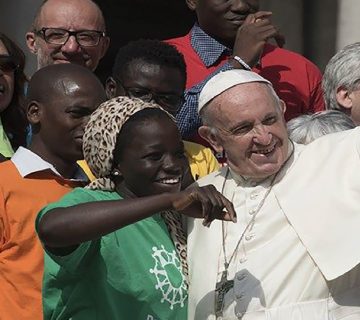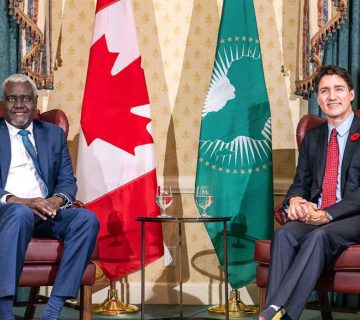Case number 5, “Maritime Delimitation in the Indian Ocean (Somalia V. Kenya)” over a disputed maritime boundary that both States claim, is awaiting the International Court of Justice’s (ICJ’s) adjudication later this year. It is prudent that Kenya does not wait for ICJ to settle the only maritime boundary it shares with Somalia, and give its advisory opinion on the same, because it could go either way. Instead, Nairobi should activate its diplomacy, and ensure both Nairobi and Mogadishu reach a mutually acceptable settlement because it is in the national interests of both Kenya and Somalia to do so.
Somalia, interested in confirming the extent of the maritime boundary in the Indian Ocean that it shares with Kenya, asked the Hague-based ICJ, also known as the World Court, to settle the boundary dispute on August 28, 2014. Somalia wants to establish the boundaries of its territorial sea, the exclusive economic zone (EEZ), and the continental shelf within and beyond 200 nautical miles (nm), based on international law and geographical coordinates.
Cases like the Kenya-Somalia one are not uncommon. There are three other similar cases on ICJ’s pending cases list. Two of these involve Nicaragua and Colombia who disagree on the “delimitation of the continental shelf beyond 200 nautical miles from the Nicaraguan coast,” and on “alleged violations of sovereign rights and maritime spaces in the Caribbean.” Then there is the Chile-Bolivia case, which is a “dispute over the status and use of the waters of the Silala.” Still, Kenya’s case is unique in several ways. Although Kenya is now framing the Court option as a surprise that Somalia ambushed on it, Kenya, in 2014, according to ICJ records, floated the idea of a binding international judicial process as one of the ways that could be explored to resolve the long-running dispute with its neighbor. Kenya has also changed its tune midstream, twice, on account of the single boundary as well as the 2009 Memorandum of Understanding (MoU). Initially, Kenya accepted the equidistance principle of maritime boundary delimitation as provided by international norms governing seas (United Nations Convention on the Laws of the Seas, UNCLOS), meaning Somalia’s boundary with Kenya runs south eastward. Kenya now argues for the disputed area using the straight line (parallel of latitude) principle. By this principle, Kenya’s boundary with Somalia runs eastward, south of Kiunga, explaining why Kenya has declared and considers the area an EEZ. Kenya also argues that Somalia is acting in bad faith because it does not honor the two-paged, ‘non-objection’ MoU regarding the delimitation of the outer limits of the continental shelf beyond 200 nm that Somalia and Kenya signed in 2009 to facilitate this delimitation. Kenya now says the MoU was a binding agreement that also provided for a specific, exclusive method to resolve the dispute.
There are two key problems here. First, the straight line principle is not legally tenable. The other problem is that attempting to expand the scope of the MoU has created mistrust between the two countries, as well as Norway, whose technical expertise and knowledge of the legal documents relating to maritime disputes Somalia sought to draft the 2009 MoU. Some observers consider Kenya’s conduct unlawful. Kenya will have a tough time proving that the MoU: is valid and binding, explicitly states that both Kenya and Somalia can opt for another method of settling the dispute, speaks to the complete course of the disputed maritime boundary (including the territorial sea, EEZ, and continental shelf within and beyond 200 nm), and that other dispute resolution mechanisms will only be sought after the Commission on the Limits of the Continental Shelf (CLCS) has provided its recommendations on delimitations.
Matters of National Interest
Kenya has helped Somalia in various ways and countless times before. The country hosts Dadaab, the largest refugee camp in the world (according to the UN refugee agency, UNHCR), with Somalia nationals being the largest group. Kenya has provided space in Kenya for feuding Somalia nationals to dialogue and seek peaceful resolutions to several conflicts affecting Somalia in the past. Kenya’s troops form part of Africa Union’s peacekeeping force in Somalia (AMISOM) and have been helping Mogadishu resolve security dilemmas and keep al Qaida-affiliated terrorist group, al Shabab, at bay. It is Somalia’s turn to reciprocate Kenya’s generosity even if doing so may not be embraced by the whole Somali nation.
It is in Kenya’s interest to keep the disputed part of the Indian Ocean after ICJ makes its advisory pronouncements in September 2019. The country’s main seaports, in Mombasa and Lamu, rely on direct access to Indian Ocean sea routes. Lamu port, in particular, is of greater interest because it is Kenya’s deepest seaport, and part of Kenya’s grand infrastructural development project, LAPPSET, that seeks to connect inland areas to the sea. Loss of this territory will mean that seaport access will be via Somalia or Tanzania, essentially rendering Kenya a landlocked country. Secondly, Kenya has already invested a lot of time, cash, and boots to help stabilize Somalia, and maintain peace in the country and region. Such gains risk being lost if Kenya disengages from Somalia. This action could see the threat of al Shabab terrorism increase in Somalia, Kenya, and the region. Furthermore, in line with the government’s Big 4 Agenda and Vision 2030, Kenya seeks to develop and exploit its blue economy. Loss of that territory will void such plans with regard to the Indian Ocean. The disputed area is also alleged to contain an estimated 100 billion barrels of oil deposits, which will be lost.
It is also in Somalia’s interest not to antagonize Kenya unnecessarily over this matter. Kenya may have made a few poor decisions apropos this bilateral dispute, but she has remained one of Somalia’s most reliable security, trade, and development partner through the years. Although Kenya has borne the brunt of Somalia’s failed state realities, internal instability, and human displacement – as evidenced by Daadab refugee camp, and sizeable Somali populations in parts of Counties such as Nairobi, and Garissa – Kenya has sustained its efforts to help Somalia establish and keep peace, including countering al Shabab terrorism. No other State in the greater Horn of Africa region compares to Kenya in these ways.
Kenya, with the help of third parties such as Ethiopia, needs to settle this drawn-out territorial (contested territory) and now also functional dispute (on account of alleged presence of oil and gas) with Somalia comprehensively, conclusively, and in a manner that is mutually acceptable to both States, and which does not jeopardize regional peace and stability. Options include non-recognition of the ICJ’s adjudication and considering a negotiated settlement instead, establishing a joint boundary commission, and exploring oil deposits jointly, and sharing the proceeds of the same.
Roselyne Omondi is the Associate Director, Research, at the HORN Institute.



